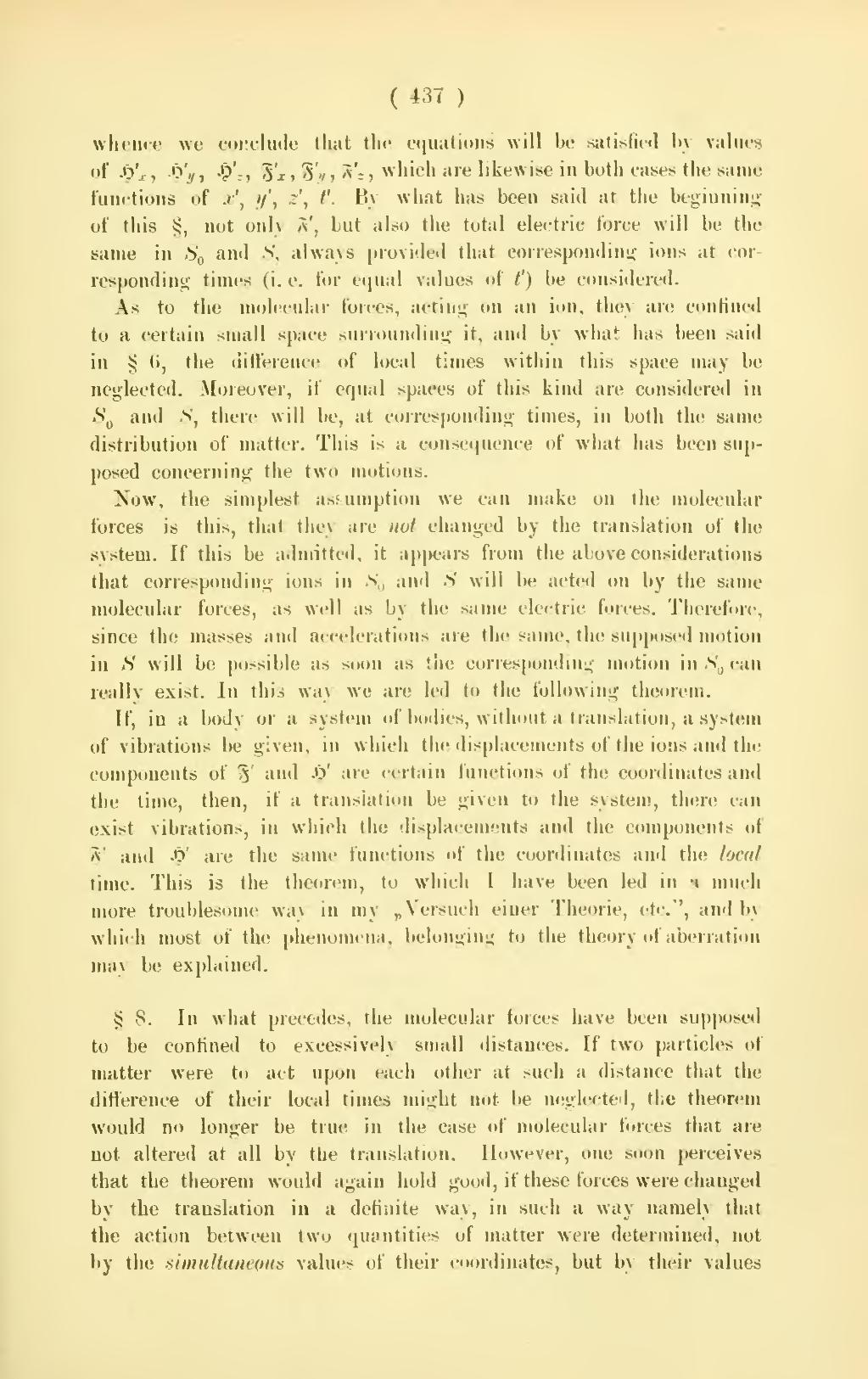( 437 )
whence we conclude that the equations will be satisfied by values of , which are likewise in both cases the same functions of x', y', z', t'. By what has been said at the beginning of this §, not only , but also the total electric force will be the same in S0 and S, always provided that corresponding ions at corresponding times (i. e. for equal values of t') be considered.
As to the molecular forces, acting on an ion, they are confined to a certain small space surrounding it, and by what has been said in § 6, the difference of local times within this space may be neglected. Moreover, if equal spaces of this kind are considered in S0 and S, there will be, at corresponding times, in both the same distribution of matter. This is a consequence of what has been supposed concerning the two motions.
Now, the simplest assumption we can make on the molecular forces is this, that they are not changed by the translation of the system. If this be admitted, it appears from the above considerations that corresponding ions in S0 and S will be acted on by the same molecular forces, as well as by the same electric forces. Therefore, since the masses and accelerations are the same, the supposed motion in S will be possible as soon as the corresponding motion in S0 can really exist. In this way we are led to the following theorem.
If, in a body or a system of bodies, without a translation, a system of vibrations be given, in which the displacements of the ions and the components of and are certain functions of the coordinates and the time, then, if a translation be given to the system, there can exist vibrations, in which the displacements and the components of and are the same functions of the coordinates and the local time. This is the theorem, to which I have been led in a much more troublesome way in my Versueh einer Theorie, etc., and by which most of the phenomena, belonging to the theory of aberration may be explained.
§ 8. In what precedes, the molecular forces have been supposed to be confined to excessively small distances. If two particles of matter were to act upon each other at such a distance that the difference of their local times might not be neglected, the theorem would no longer be true in the case of molecular forces that are not altered at all by the translation. However, one soon perceives that the theorem would again hold good, if these forces were changed by the translation in a definite way, in such a way namely that the action between two quantities of matter were determined, not by the simultaneous values of their coordinates, but by their values



